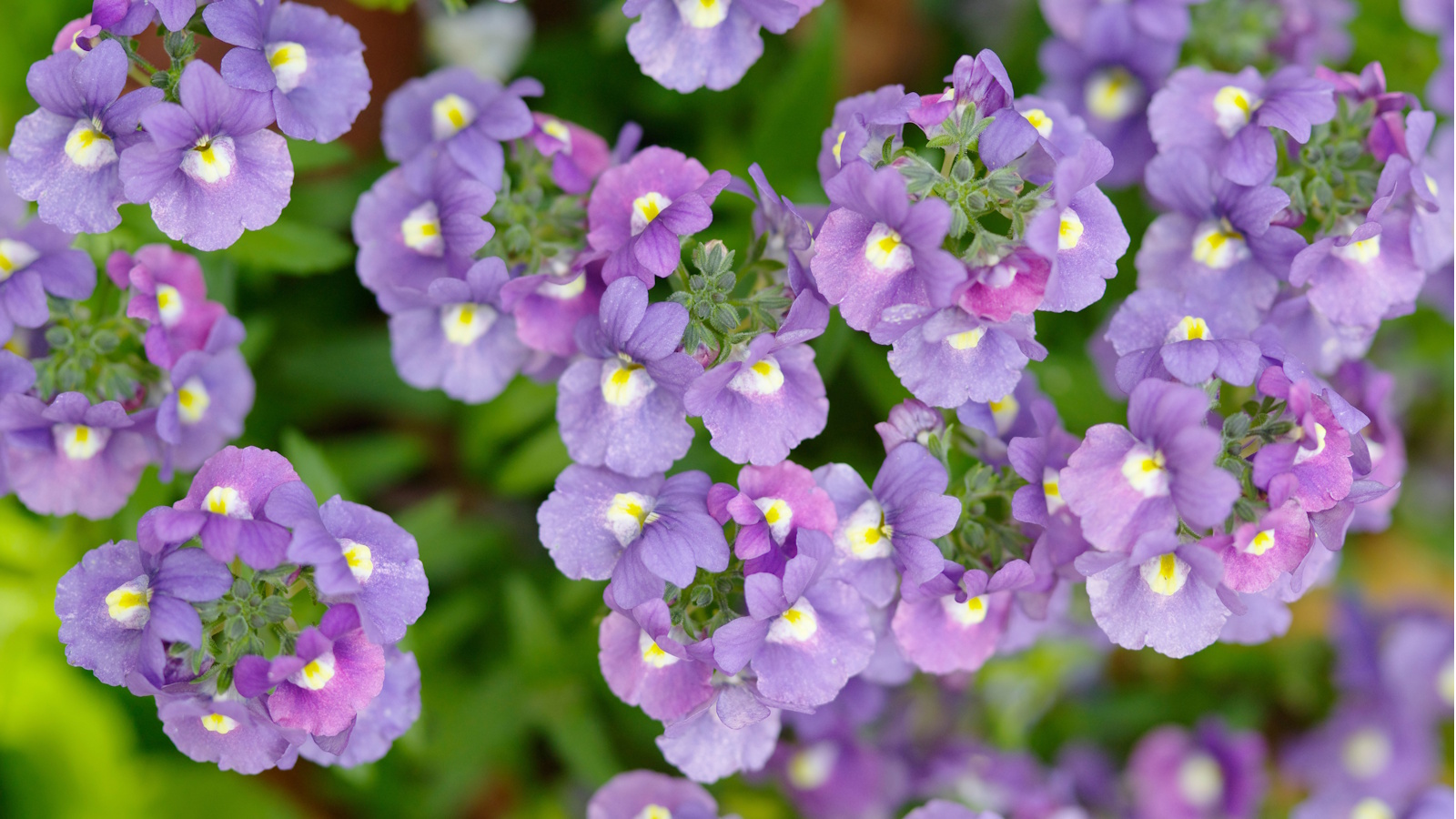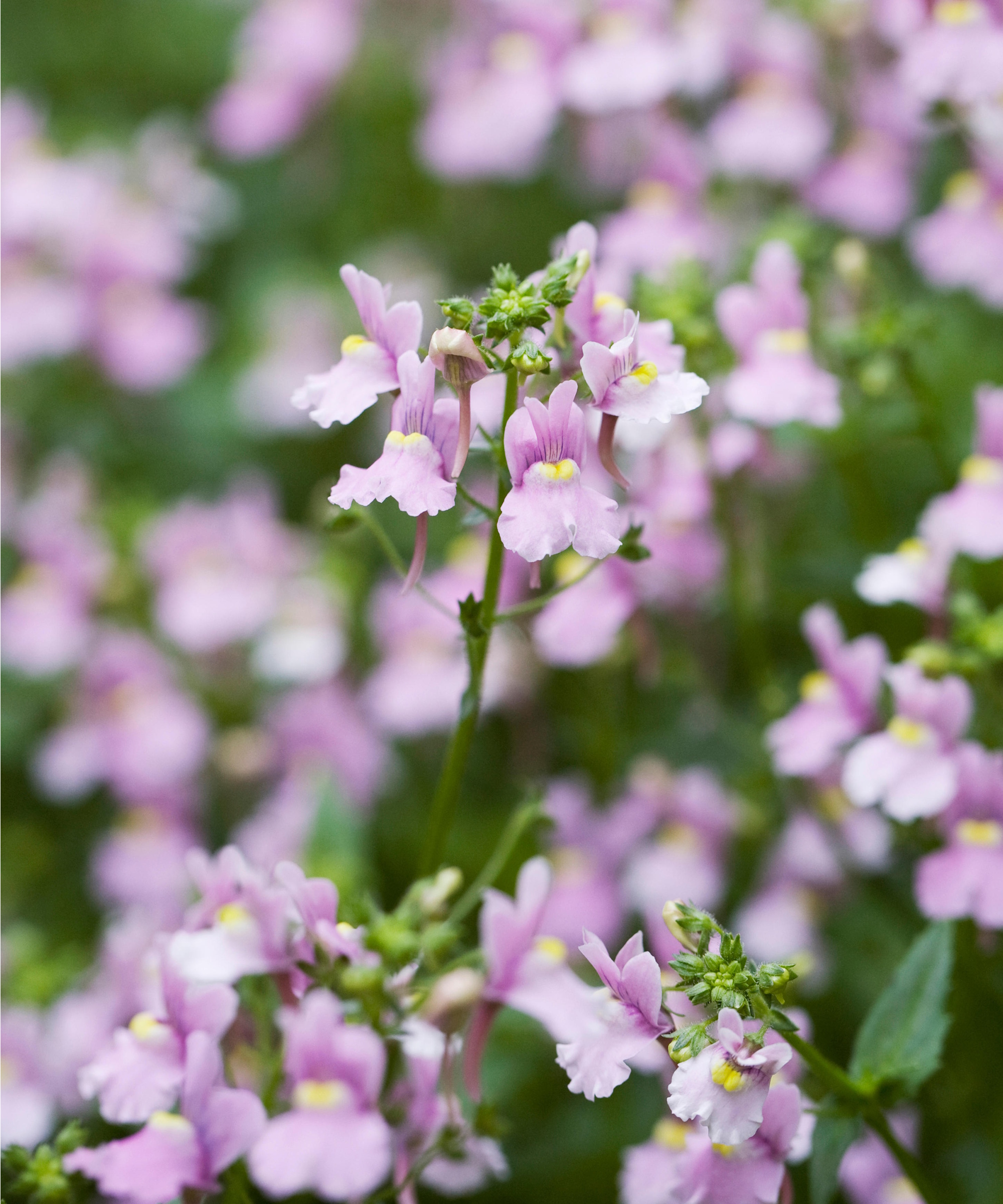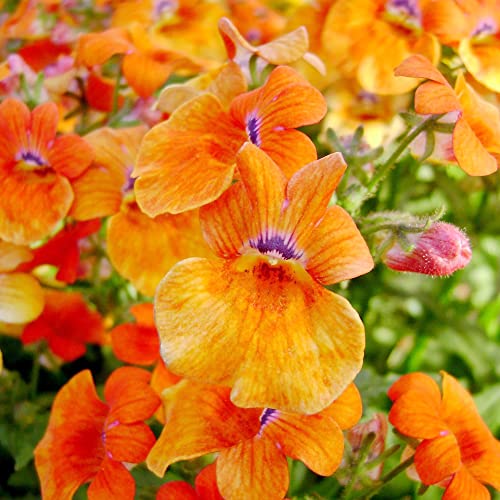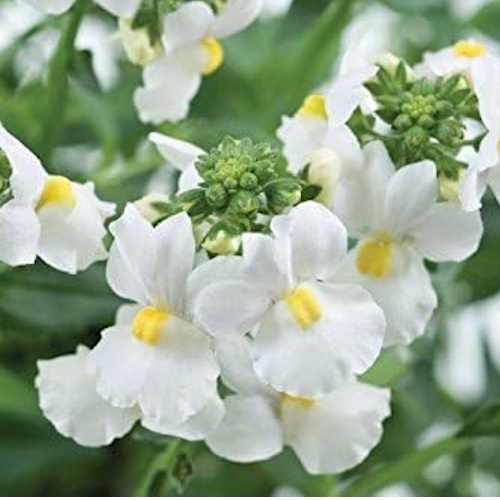How to grow nemesia – for delicate yet profuse perennial blooms that last all summer long
These reliable perennials will soon become a favorite for your borders, beds, and pots


My weekends currently consist of lots of trips to the garden center as I work on planting up a new border full of cottage garden-style plants. One that quickly made its way into my basket was nemesia, a beautiful compact flowering perennial with dainty blooms and bushy foliage.
It's often overlooked as a cottage garden plant, but nemesia's calming hues – I chose 'Amelie', made up of pastel pinks and purples – and flowers reminiscent of both snapdragons and wallflowers are the epitome of romantic, soft planting. You can, though, also opt for much bolder colors, such as 'Sunmesia Dark Red' or the deep purple-blue 'Lady Anne.'
No matter which variety captures your attention, I couldn't recommend nemesia enough. It's been performing excellently in my border so far, and it's likewise a favorite for pots. They also provide a long flowering season, typically from May to October, dazzling throughout summer. So, if this sounds like the perfect bloom for your yard, here are a few tips that have been helping me to grow nemesia in my garden:
Nemesia: Plant profile

Before jumping in with how to grow nemesia, there are a few considerations to keep in mind to ensure it's the right plant for your backyard.
Nemesia is native to South Africa, another reason I picked it up as a nod to my heritage. It is typically found along sandy coasts and disturbed ground in this region.
For this reason, it thrives in a sandy or loamy soil type, which I luckily have in the area of my garden where I have planted it. Generally speaking though, it will do well any well-draining soil.
And while you may assume it needs a hotter climate to grow well, nemesia can actually be grown across US hardiness zone 2 to US hardiness zone 10. This explains why it's doing so well in my milder south UK garden.
Design expertise in your inbox – from inspiring decorating ideas and beautiful celebrity homes to practical gardening advice and shopping round-ups.
You may also want to take the size of this plant into account. Typically, nemesia has a height and spread between six and 18 inches, but there are some larger varieties that to 24 inches in height.
This makes them ideal for compact plants at the front of a border, filler plants for sparse flower beds, or additions to container gardens.
With these things in mind, follow the below tips to grow nemesia in your yard:
How to grow nemesia

- Soil: As mentioned, nemesia prefers a sandy or loamy soil, but the most important thing is that it's well-draining. So, if you're planning to grow nemesia in pots, opt for a potting soil full of materials that add drainage like perlite or vermiculite (like this Miracle-Gro potting soil from Amazon). Likewise, you can use rocks and pebbles to fill the bottom of a larger planter to add extra drainage for your nemesia.
- Light: I've planted my nemesia in a full sun position and ever since it has been blooming profusely. If you are planning to grow nemesia in the ground, choose somewhere it will get at least six hours of direct sun. Of course, if you grow nemesia in a container, you have the option to move it with the sun. If you're struggling to provide optimal sun exposure, try pruning surrounding tree branches and plants that may be blocking sun to your nemesia. To do this, use essential pruning tools (like this loppers from Amazon).
- Watering: As expected with its hot native habitat, nemesia is somewhat a drought-tolerant plant. But, they actually prefer to have consistently moist soil. During particularly hot days recently, I have noticed my nemesia looking a little droopy. After a deep watering, it perked up again. I use a watering can with a shower spout (like this one from Amazon) over a garden hose. I find it's much more gentle on my nemesia, ensuring its delicate flowers don't become damaged. To avoid overwatering, I also like to use this soil moisture meter from Amazon to first check my nemesia's soil. It only needs watering when the top couple of inches have dried out.
- Pruning: Due to having such a long flowering season (from spring to fall), it's wise to deadhead nemesia as blooms fade. Do this by using sharp pruning shears (from Amazon) to make a clean cut just above a leaf node. This will encourage new growth and repeat blooms. You can also cut back leggy foliage to encourage bushier growth. These plants are also sensitive to frost, which is why some gardeners choose to treat them as annuals. For this reason, if you're growing nemesia as perennials, it can be a good idea to cut them back in winter to just a couple of inches above the ground. You may also choose to transplant them into a pot to move to a sheltered location and protect these plants from frost. I plan to enlist the help of these frost-proof plant cloches from Amazon when the coldest season comes around.
FAQs
Does nemesia need fertilizing?
While nemesia does benefit from a balanced fertilizer (from Amazon), it isn't essential for its growth as it isn't a heavy-feeder. To encourage bigger and longer-lasting blooms, consider using a bloom boosting slow release fertilizer (from Amazon). If you do choose to fertilize nemesia, only do so during its active growth season in spring and summer. Avoid fertilizing mistakes by also taking note of the manufacturer's recommended frequency for the product you choose to use.
If you live in a colder climate, it can be wise to propagate nemesia to ensure it survives for next year. You can do this via seed or by taking plant cuttings. That way you'll have a new nemesia plant for your summer hanging baskets.

Tenielle is a Gardens Content Editor at Homes & Gardens. She holds a qualification in MA Magazine Journalism and has over six years of journalistic experience. Before coming to Homes & Gardens, Tenielle was in the editorial department at the Royal Horticultural Society and worked on The Garden magazine. As our in-house houseplant expert, Tenielle writes on a range of solutions to houseplant problems, as well as other 'how to' guides, inspiring garden projects, and the latest gardening news. When she isn't writing, Tenielle can be found propagating her ever-growing collection of indoor plants, helping others overcome common houseplant pests and diseases, volunteering at a local gardening club, and attending gardening workshops, like a composting masterclass.
You must confirm your public display name before commenting
Please logout and then login again, you will then be prompted to enter your display name.


